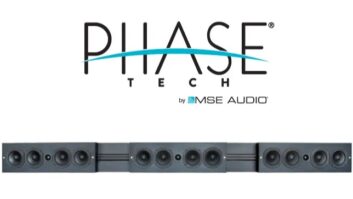The percentage of CEDIA members who do retail has inched up in recent years, reflecting retailers’ growing involvement in the custom segment, said CEDIA executive director Billilynne Keller in analyzing the results of the association’s annual membership survey.
The survey found that 49% of members are retailers who do custom installation, while the rest do nothing but custom install. In comparison, the percentage of retail members was 48% in the 1998 survey, 45% in 1997, and 46% in 1996. In 1995, however, the percentage of retailer/installers was 48%, almost matching the current 49%.
The survey also found that retail sales account for a growing share of revenues among CEDIA members who operate retail stores. That finding, too, reflects the growing influx of retailers entering the custom market, Keller claimed. “Eventually, their custom divisions will grow” to account for a growing proportion of their revenues, she said.
Among the installer/retailers polled this year, retail accounted for 55% of revenues, up from 45% in 1998, 39% in 1997, 42% in 1996, and 35% in 1995.
The 1999 survey also found that members’ average annual custom-install revenues rose to $941,000 and total sales, including retail, rose to an average $1.63 million (see chart).
Though up from 1998, those numbers are below their 1997 peaks — a change CEDIA attributes to a growing membership base that now includes a greater number of smaller businesses.
That observation is borne out by the growing percentage of members working out of homes or commercial facilities, where rents are cheaper than in retail locations. In the 1999 survey, 33% of members operated their business in a retail location, down from the previous year’s 42%. Nineteen percent operated their business out of a house, up from 15% in 1998. And 19% operated out of commercial facilities, such as industrial parks, up from 15%.
The percentage operating out of showrooms, which could be in retail areas, but that don’t cater to walk-in traffic, fell to 31% in 1999, from 1995’s 35%.
Wherever they locate their business, CEDIA members are an optimistic bunch. The survey found that 91% of polled CEDIA installers expect their revenues to grow by an average of 30% during the next year, almost matching the results of the previous years’ surveys.
Other survey results have remained relatively constant over the years. They include average number of employees, the average mix of equipment and labor dollars per job, the average length of a job, and installation venues (new construction, remodels and retrofits).
On the other hand, sources of new business have changed more noticeably. Referrals from builders, for example, have grown as a new-business source, while referrals from architects and interior designers have declined.
The percentage of members getting referrals from builders rose to 54% in the 1999 survey, from 33% in the 1995 survey. For those years, the number of members getting referrals from architects fell to 18% from 26%, and from interior designers to 1% from 19%.
This year’s survey was answered by 178 of the association’s 810 members.












